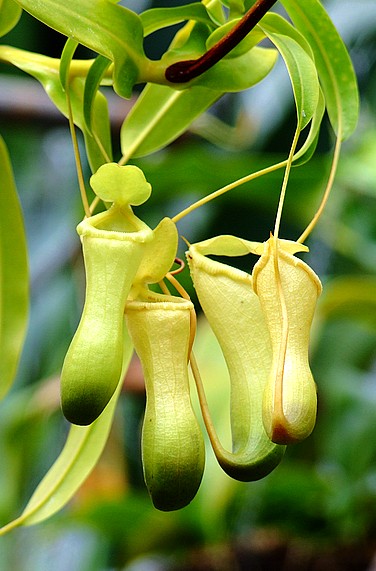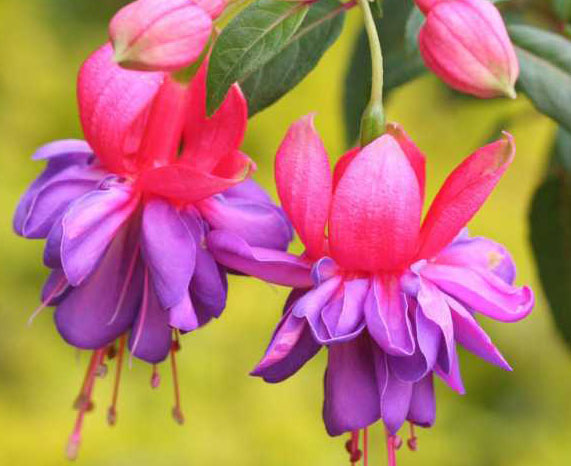What are the common diseases of Petunia?
1. Powdery mildew. After the disease, remove the diseased leaves in time, spray 75% chlorothalonil 600 times 800 times the liquid at the initial stage of the disease.
2. Leaf spot. Try to avoid bruising leaves, and pay attention to prevent wind damage, sunburn and freezing injury; timely removal of diseased leaves and burn, pay attention to remove fallen leaves; spray 50% Dysen zinc 1000 times solution to prevent and cure.
3. Virus. Remove the diseased plant and bury it or burn it; spray 40% omethoate 1000 times to control aphids; in the cultivation operation, the utensils and hands that have come into contact with the diseased plant should be disinfected.

Daffodil mosaic disease:
Symptoms:
There are no symptoms or slight green mottling in the early stage of daffodil growth. With the development of the disease, obvious mosaic symptoms did not occur until the middle stage of growth, when the leaves were yellowed and twisted, and the plants were obviously short and thin. The pathogen is daffodil mosaic virus. Through leafhopper, juice and contact transmission, poisonous bulbs and bulbs are also important ways of transmission. The virus also infects red daffodils, daffodils, hyacinths, Catharanthus roseus, thousand-day red, petunia, tricolor spiral flowers, velvet tasseled chrysanthemum and other ornamental plants. In addition, cucumber mosaic virus can also cause daffodil mosaic disease.
Prevention and control methods:
The main results are as follows: 1. Detoxification by the combination of stem tip tissue culture and heat treatment, the cultivation of non-toxic seedlings, and the establishment of non-toxic mother ball base.
2. Pay attention to the hygiene in the field, remove and destroy the diseased plants immediately so as not to spread the virus.
3. Spraying insecticides to control peach aphids and other aphids and leafhoppers and other venomous insects, the above methods should be combined with comprehensive control, can achieve good control results.
Grey mold of daffodils:
Symptoms:
After the Narcissus bulb was damaged, the root disc rotted and softened, and the surface was covered with gray mildew layer.
Prevention and control methods:
1. Horticultural control: the bulb had better be placed on the bamboo curtain with a thin layer, and the storage place should be dry, ventilated and transparent.
2. Chemical disinfection: the bulbs were treated with 0.5% formalin for half an hour, washed and stored in the shade.
3. Artificial control: diseased bulbs are found during storage and immediately picked out and destroyed.
Yellow streak of daffodils:
Symptoms:
The typical symptom is the formation of yellow stripes along the veins of the leaves, which becomes a systematic mosaic. The diseased leaves began to be rough, and the pedicels also had obvious chlorotic spots and broken flowers. Finally, the bulb became smaller, the plant dwarfed and withered ahead of time. Some varieties showed no obvious chlorosis on their leaves, while others showed green stripes. The pathogen is daffodil yellow streak virus. Juice can also be transmitted by peach aphids and other aphids. Daffodils yellow streak virus can also infect star daffodils, daffodils, red daffodils, multi-flowered daffodils and longevity flowers. Others are latent disease and stripe disease, which are caused by Narcissus latent virus and Chinese Narcissus stripe virus respectively. Under natural conditions, there will be two or more virus co-infection in the past, and the symptoms will be complicated.
Prevention and control methods:
The main results are as follows: 1. Detoxification by the combination of stem tip tissue culture and heat treatment, the cultivation of non-toxic seedlings, and the establishment of non-toxic mother ball base.
2. Pay attention to the hygiene in the field, remove and destroy the diseased plants immediately so as not to spread the virus.
3. Spraying insecticides to control peach aphids and other aphids and leafhoppers and other venomous insects, the above methods should be combined with comprehensive control, can achieve good control results.
Great Brown spot of Narcissus
Symptoms:
At the initial stage of the disease, the disease spot appeared at the tip of the leaf, showing a brown color, which was clearly separated from the healthy part. Later, disease spots will also appear on the edge and middle of the leaves, and the pedicels can also be infected. The lesion is brown at first and becomes oval or irregular after expansion, and the flood of a single spot can reach 1 cm × 4. Five centimeters. The disease spots are all and show slender stripes, and the upper and lower ends are rapidly yellowed. When the disease spot occurs at the edge, the leaf growth stagnates and becomes twisted. The disease spot on the Chinese narcissus is obviously thickened and the surrounding tissue is yellowed. The disease spot of the trumpet daffodil is brown and does not yellowing around.
Pathogen and morbidity status:
The pathogen is stagonospora curtisii. The mycelium or conidia overwintered or oversummer on the upper end of the bulb epidermis or on dead leaves. Conidia are spread by wind and rain. Germs can also spend summer on other hosts such as Guting flower and Manjushri orchid. There were more Rain Water in the south from April to May, and the disease was more serious. Planting is too dense, poor drainage, continuous cropping will aggravate the disease. There were also differences in disease resistance among varieties. The disease of multi-flower daffodils is serious, while that of green daffodils and trumpet daffodils is mild.
Prevention and control methods:
1. Cut off the diseased leaves, pull out the diseased plants and reduce the infection source.
2. Avoid continuous cropping or planting plants such as Guding flower, magnolia, hundred-seed lotus and so on near the daffodil planting site.
3. Avoid the wound during the bulb harvest, peel off the film before planting, soak 0.5 mi 1.0 hours with 1% formaldehyde solution, or 50% carbendazim 500 solution for 12 hours, or 0.1% liter mercury solution 0.5 Mel 1.0 hours, reduce the initial infection.
4. During the onset period, 1% Bordeaux solution or 75% chlorothalonil 1000 times solution or 70% topiramate solution can be sprayed.
Extended reading:
How to fertilize daffodils, what fertilizer to apply, pest control, flowering period, how to raise, breeding methods and cultivation techniques
- Prev

What are the common diseases and insect pests of pitcher plants?
Pitcher plants grow slowly at seedling stage, and there are often diseases and insect pests such as red spiders, aphids, leaf spot, anthracnose and black spot, especially under the conditions of poor ventilation, too shade and low temperature. In addition to the need to timely regulate the growth environment conditions, it should also be timely spraying control.
- Next

What should I do if I hang the golden bell upside down?
The pest that hangs the golden bell upside down is mainly red spider. The best control method is to put the plant in a well-ventilated place and spray the whole plant, especially the back of the leaves, with heavy water. This is due to the dry indoor air, the eggs hatch into adults in a suitable environment and then directly harm the plants, but mites are afraid of dampness.
Related
- Fuxing push coffee new agricultural production and marketing class: lack of small-scale processing plants
- Jujube rice field leisure farm deep ploughing Yilan for five years to create a space for organic food and play
- Nongyu Farm-A trial of organic papaya for brave women with advanced technology
- Four points for attention in the prevention and control of diseases and insect pests of edible fungi
- How to add nutrient solution to Edible Fungi
- Is there any good way to control edible fungus mites?
- Open Inoculation Technology of Edible Fungi
- Is there any clever way to use fertilizer for edible fungus in winter?
- What agents are used to kill the pathogens of edible fungi in the mushroom shed?
- Rapid drying of Edible Fungi

